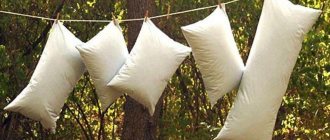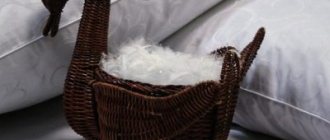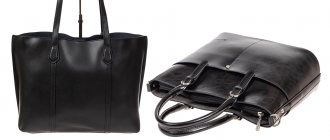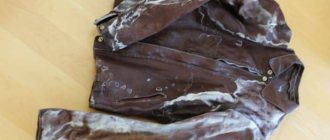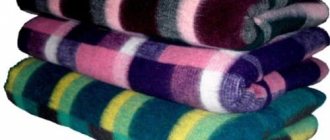A blanket keeps a sleeping person warm on cold nights, but a comfortable and healthy sleep is only possible if it is clean and fresh.
Dirty and foul-smelling bedding does not provide a pleasant experience.
Read the article about how to wash a blanket in an automatic washing machine and manually, whether you need to wash a new one after purchase, which detergents to choose and how to properly care for products made from different types of fabric.
Is it washable?
The blanket can be washed by hand and in a machine. The choice of how to care for it depends on a number of factors.
Machine washing is not permitted in the following cases:
The bedding is made of fabric that does not tolerate automatic processing. For example, products made from sheep or camel wool are not loaded into the drum.- The blanket is too big. When wet, its weight increases, which can lead to equipment failure.
- The product is old, its upholstery is thin or has some damage. During the machine washing process, the item may completely deteriorate.
To understand whether a blanket can be washed in a machine, you need to read the information provided by the manufacturer on the label. His recommendations should not be violated.
If a correctly folded blanket takes up more than 2/3 of the drum, then it is better to refuse washing. It will not be possible to properly clean and rinse it.
Signs permitting and prohibiting processing
You can understand whether a blanket can be machine washed by studying the icons indicated on the product label. Sometimes care instructions can be found on the packaging. Therefore, you should not rush to throw it away.
Explanation of the main symbols:
- Hand wash only - icon of a basin with a hand in it.
- Any washing is prohibited - a crossed out icon of a basin with water.
- White circle – dry cleaning or dry cleaning.
- Washing machine icon - automatic washing and spinning possible.
- Crossed out washing machine icon—automatic drying and spinning are prohibited, but washing is possible.
The numbers indicated inside the icons indicate the maximum washing temperature of the product.
If the item is of high quality, and the manufacturer cares about its reputation, then in addition to the icons, you can see text on the label that specifies the information encoded in the form of icons.
Do I need to wash a new blanket?
If the purchased product is sold in packaging and there is no visible dirt on it, it is enough to simply ventilate it to eliminate the specific odor. If the blanket is not packaged, it should be washed, since it is unknown in what conditions the item was stored and how many hands touched it in production and in the store. Wash your blanket as usual, following the instructions on the label.
Important! Blankets intended for newborns must be washed regardless of the packaging, since babies' immunity has not yet developed, and their skin is highly sensitive to external influences. For washing it is necessary to use special children's products. If the blanket is not washable, you should definitely purchase a duvet cover (preferably cotton).
The best means
In order for the product to wash well, you need to use the right detergent . The only recommendation is to choose a liquid powder or gel.
This form of release is good because the composition dissolves quickly, copes better with dirt, is activated in cool water and rinses well.
Bulk powders are not prohibited from use, but in this case you will have to rinse the item at least 2-3 times.
Most liquid concentrates are universal , that is, they are suitable for caring for ordinary and delicate fabrics, including natural wool and silk.
You definitely need to pay attention to the composition. It should not contain aggressive components such as chlorine bleach or acids.
When washing duvets, it is recommended to use detergents containing lanolin. They prevent the formation of lumps, so the filler does not get lost.
Top 3
The range of liquid detergents is varied. When choosing, you need to focus on their price and features of use:
Washing gel “Weasel wool and silk” . This product is suitable for caring for blankets made of synthetic and natural fibers. It starts working at a temperature of 30 degrees. The harder the water, the greater the consumption of detergent. For 1 liter of gel you will need to pay about 250 rubles.- Universal washing gel “Synergetic” . The concentrate can be used to care for any products: cotton, synthetics, silk and natural wool. It is suitable for hand and machine washing, does not contain aggressive components, is dosed sparingly, and is used to care for children's bedding. The cost of 1 liter of gel is about 210 rubles.
- Persil freshness washing gel from Vernel . It contains a stain remover, so it is suitable for washing light and white fabrics. The cost of a 1.95 liter package is about 450 rubles.
Do not exceed the dosage of detergent. This will not improve the quality of washing, but will only make it more difficult to rinse foam from fabrics.
Detergents
When planning to wash blankets at home, you should carefully choose detergents so as not to spoil an expensive item. From the arsenal offered by stores, you should choose gentle gel-like ones, without reagents and bleach.
Worth remembering! Do not use colored laundry products on whites and vice versa.
For wool blankets, you must use a universal liquid detergent in the form of a gel or shampoo without chlorine and bleach. Bamboo washes well in gels designed specifically for down items.
Preparation for the procedure
Before you start washing, you need to properly prepare your bedding.
It is recommended to do the following:
- Remove the item from the duvet cover.
- Eliminate all existing defects in the product. If there are any loose seams or holes, they need to be sewn up.
- Remove dust from the blanket. It can be knocked out, shaken out or vacuumed.
- Wash difficult stains in advance. To do this, use laundry soap, which is foamed and applied locally to the contaminated area.
- Fold the blanket correctly. It is folded several times, rolled into a roll and placed in the drum of the washing machine around the perimeter.
How to prepare a blanket for washing
Sometimes, to get an answer to a question about washing a blanket, it is enough to read the information on its label. As a rule, it contains recommendations on the correct washing temperature, prohibits or permits spinning and twisting of the product, and sometimes completely prohibits washing and recommends dry cleaning.
Some housewives prefer to use a laundry service to wash blankets, but most of them successfully perform this procedure at home.
If washing the product is allowed by the manufacturer, then before starting it, you must carefully prepare the blanket. The main stages of preparing a blanket for washing are as follows:
- Check the blanket for dirt stains. Dry if necessary. Remove dried dirt with a brush.
- To improve washing efficiency, the blanket should be air dried for several hours.
- If damage is found, it is necessary to mend the blanket to avoid further tearing of the fabric during washing and the filling falling out.
- To reduce the risk that the blanket will fade during washing, before starting it, you need to soak the blanket in 10 liters of water with the addition of one capful of liquid detergent and a teaspoon of ammonia.
- Before loading a blanket into the drum of an automatic washing machine, you need to roll it into a roll (or snail) so that its dimensions do not exceed the size of the drum.
How to wash in an automatic washing machine: at what mode, temperature?
When starting to machine wash, you need to take into account the peculiarities of caring for a particular product. The uniform instructions for use require the following steps:
Place the prepared product in the washing machine.- Pour liquid detergent into the compartment.
- Set washing parameters. The maximum water temperature depends on the material from which the blanket is made. Most often, this figure should not exceed 40-60 degrees. In the case of delicate fabrics and fillers (bamboo, wool, silk) they are limited to 30 degrees.
- If spinning is allowed, then it is better to set the speed to 600-700 rpm.
- When washing with powdered detergents, be sure to turn on the “extra rinse” function.
- Start the wash and wait until it finishes.
Do not leave a wet blanket in the washing machine drum after the end of the cycle. The longer it is crumpled, the higher the likelihood that the filler will get knocked down.
Manual method for large blankets
Large blankets that do not fit in the washing machine will have to be washed by hand. This need arises with large double and euro sizes, as well as with those types that cannot be machine washed (for example, quilted).
The main problem that housewives face when washing a large blanket is that it becomes too heavy to lift because it becomes saturated with water. Quilted fabric, in addition, unravels, losing its shape and texture. The optimal way to wash a blanket without tearing or ruining the item is to wash it horizontally, unfolded. It can only be done on the street.
- We spread a large sheet of polyethylene on the asphalt, on which the blanket will subsequently be laid out. Before doing this, you need to put a long stick in the middle - it is needed to dry the product. Make sure the stick is durable and will not stain the fabric after contact with water.
- Lay out the blanket and pour soapy water over it. To foam the solution more strongly and allow it to be absorbed into the depths of the filler, you need to walk on top of your feet. This way the material will not be damaged or become lumpy.
- Next, the soap solution is thoroughly washed out using a watering hose.
- You can squeeze out excess moisture by rolling the blanket into a roll and applying a little pressure on top.
- To dry, the item is unrolled and the stick is raised like a horizontal bar. At first, the height of several bricks is enough to allow the moisture to gradually drain from the middle to the edges. Next, the height needs to be increased until the fabric stops touching the ground.
Wash by hand
Washing a blanket by hand is difficult, but this method of processing is the most gentle. Features of the procedure:
- Wash difficult stains separately. To do this, use laundry soap.
- Fill the bathtub with warm, but not hot water (not higher than 40 degrees).
- Dissolve detergent in it.
- Immerse the blanket in water and leave for 1-2 hours. Every 15-20 minutes you need to approach it and press it with your hands. You can turn the item over and wrinkle it slightly.
- Drain dirty water.
- Rinse the product until no more foam is washed out of it.
- Do not twist or wrinkle the item; leave it in the bathroom until most of the water has drained from it.
- Gently wring out the fabric with your hands and send to dry.
If the fabric allows, you can rub it with a soft-bristled brush or use a sponge.
Caring for Bamboo Blankets
They have also earned the attention of millions of people. Such specimens are lightweight, allow air to pass through well, prevent freezing in winter, and have many other advantages. They can be washed not only by hand, but also using an automatic machine. Let's look at each option in more detail.
Manual process:
- Fill the bathtub halfway with water.
- The water temperature should be 40 degrees.
- Add detergent and mix it in water.
- Lower the blanket.
- Let sit for 10 minutes. Knead it with gentle movements.
- Change the soapy water to clean water and perform the rinsing procedure. Repeat 3-5 times.
- Let the water drain.
- Dry the product.
Machine washable. Stages:
- Roll up the blanket and load it into the drum.
- Use only liquid detergent. You can use this option for washing baby clothes.
- Be sure to select the double rinse mode.
- Hand wash or delicate wash modes are suitable.
- The spin force is no more than 800 rpm.
When choosing a washing program, it is important to pay attention to the amount of time. It is advisable that the cycle last less than 60 minutes. It is extremely undesirable for bamboo to remain in water for a long time.
Now you can run the program and wait for it to finish. Dry the item thoroughly. It needs to be shaken periodically. This will add lightness and fluffiness.
Features for different materials
Depending on the type of fabric from which the blanket is made, the features of caring for the product will differ. This factor affects all parameters:
- on the washing temperature,
- spin speed,
- choice of detergent.
Silk
Silk products are extremely finicky to care for. Therefore, if possible, they are sent to dry cleaning.
At home, you can resort to machine or hand washing, taking into account the following recommendations:
- water temperature no higher than 30 degrees;
- detergent – liquid only;
- refusal of bleaches and stain removers;
- spinning is not recommended (both manual and automatic).
The more carefully you handle silk fabric, the longer it will serve its owner.
Holofiber
Hollofiber is a synthetic fiber that is not difficult to care for. It can be washed both by hand and in a machine.
Basic recommendations:
- water temperature – no higher than 60 degrees;
- spin speed – up to 500 rpm;
- liquid detergent.
To remove stubborn stains, you can use a non-aggressive stain remover.
Baykovoe
The flannelette blanket can be washed in a machine or by hand. If the composition contains wool thread, then only liquid detergents can be used. Difficult stains are removed with laundry soap.
Flannelette bedding is often used in cribs, so laundry products should not contain aggressive components, fragrances or high concentrations of surfactants . The maximum water temperature is 40 degrees.
Read more about how to care for a flannelette blanket here.
Cotton
A cotton blanket is very heavy, and when wet, its weight increases 5 times. However, it needs regular maintenance, as the filler quickly absorbs foreign odors, dust and other contaminants.
If the product is small, then you can limit yourself to hand washing, using only liquid detergent . The water temperature should not exceed 40 degrees.
When the blanket is of impressive size, it is taken to the dry cleaner. You won't be able to cope on your own.
Read more about how to care for a cotton blanket here.
Bamboo
With proper care, a bamboo blanket retains its shape for a long time and does not crumple. Wash it only with liquid powder.
Machine washing is not prohibited, but the water temperature should not exceed 40 degrees . Bamboo fiber is not afraid of high spin speeds (up to 800 rpm).
However, it is not recommended to keep such a product in water for too long. Therefore, the total washing time should not exceed 60-80 minutes.
Read more about how to care for a bamboo blanket here.
Down
The duvet can be washed either by machine or by hand. To care for it, use only liquid detergent . It is recommended to reduce its amount by 2 times to avoid excessive foaming.
The water temperature should not exceed 50-60 degrees. This treatment is used once a year to destroy dust mites.
The rest of the time it should not exceed 30 degrees. Be sure to turn on the extra rinse function.
Read more about how to care for your duvet here.
Sintepon
The synthetic blanket is light and warm. It is easy to care for and can be washed in a machine or by hand. The main condition is not to exceed the water temperature of 40 degrees .
Products made from padding polyester are resistant to aggressive detergents in the form of chlorine. Difficult stains are removed with laundry soap. To improve the quality of hand washing, use a brush with soft bristles.
The product can be pressed at high speeds (up to 800 rpm) . Prolonged soaking is acceptable.
Read more about how to care for a padding polyester blanket here.
Woolen
A wool blanket is light, environmentally friendly and hypoallergenic, but its significant disadvantage is its high care requirements. It is not recommended to machine wash it.
If such a procedure cannot be avoided, then you need to select the appropriate program (“Wool”, “Delicate wash”) . If you are not sure that the procedure will take place without harm to the product, it is better to use dry cleaning services.
When washing by hand, it is unacceptable to exceed the water temperature of 30 degrees. The product is not wrung out or twisted.
Read about how to wash a wool blanket here.
Made from camel hair
Manufacturers of camel wool products recommend not to machine wash them. It is cared for manually.
The detergent must be liquid . There are specialized formulations on sale designed specifically for woolen fabrics.
Soaking should not exceed 30 minutes, and the total washing time of the product should be 1 hour. You need to rinse the item thoroughly so that there are no gel particles left in it that will destroy the natural fiber.
Read more about how to care for a camel wool blanket here.
From sheep
When caring for a blanket made of sheep wool, you need to take into account the features of its manufacture .
Quilted items can be washed in a machine using the “Wool” program, whole woven items can only be washed by hand, and fur items must be dry cleaned exclusively.
The water temperature should not exceed 30 degrees. Do not subject the bedding to an automatic spin cycle or twist it manually.
Read about how to wash a sheep's wool blanket here.
Cotton blanket
This type of blanket is usually inherited from past times. The cotton blanket is quite heavy, but at the same time very warm, which is important on frosty winter nights. However, in addition to its advantages, a cotton blanket also has a disadvantage. The disadvantage can rightly be called the difficulty of cleaning a cotton blanket.
When wet, the already heavy blanket becomes simply too heavy to lift, and the fragile housewife clearly cannot do without the help of strong male hands. In addition, when washed, the cotton wool in a blanket can clump into clumps, causing it to become lumpy. Such a blanket will take a very long time to dry and is unlikely to dry in an apartment without becoming saturated with the smell of dampness and mustiness.
It is recommended to clean a cotton blanket using a dry method, washing only local areas. And to get rid of dust, you can beat the product outside with a beater.
You can clean a cotton blanket by following these recommendations:
- First of all, the blanket must be shaken off and cleaned of dust so that when it comes into contact with the product and water, it is not absorbed into the surface of the material. You can knock the dust out on the street.
- Prepare a cleaning product from previously grated laundry soap or liquid laundry detergent, dissolving them in warm water.
- Using a sponge, apply the product to the surface and rub gently, being careful not to wet the filler.
- Use a clean sponge and water to remove the cleaning compound from the treated area of the blanket.
When deciding how to wash a wadded blanket in an automatic washing machine, it is important to take into account the fact that a large blanket will be very heavy when wet, which in most cases can lead to damage to the washing machine. For this reason, it is recommended that only baby blankets be machine washed. The following points should be taken into account:
- The temperature should be set no higher than 40°C.
- It is recommended to select the washing mode: “Delicate”, “Hand wash”, “Wool”, depending on the automatic machine model.
- Disable the “Spin” mode or set it to minimum speed.
- Instead of washing powder, use soap shavings or gel for washing woolen items, as the powder will not be completely washed out of the filler.
- Throw 5-6 tennis balls into the drum with a blanket, after washing them. This will prevent the filler from clumping during washing.
- It is recommended to remove local contamination in the form of baby urine or spilled drinks in advance by washing the blanket locally.
- After washing, remove the blanket from the drum immediately, without allowing it to sit wet.
- Lay the blanket out on a flat, horizontal surface, preferably outdoors. To protect from direct sunlight, cover with a thin sheet. When drying indoors, direct a stream of warm air from the heater towards the washed blanket.
Important! It is not recommended to dry a blanket made of cotton filling in a vertical position, as the filling will slide down to the edges and the blanket will lose its shape and thermal insulation properties.
baby blanket
When washing a baby blanket, take into account the following recommendations:
Care should be regular (at least once every 1-1.5 months). It is carried out as needed.- You should only use specialized detergents, for example, “Eared Nanny” washing gel.
- To remove local contaminants, use laundry soap. The use of aggressive components is unacceptable.
- After washing, the item must be ironed, unless the manufacturer prohibits it.
To soften the fabric, you can use a hypoallergenic fabric softener, for example, Lenor Children's.
Washing blankets in an automatic machine: basic rules
Washing a blanket in a machine is not difficult, the main thing is to follow the recommendations for cleaning and care. Basic Rules:
- study the information on caring for the item. Any textile is equipped with a label that displays all the necessary information, the ability to wash by hand or by machine, temperature conditions, intensity of drum rotation, drying methods;
- select the desired cleansing program, taking into account the material of the blanket and filling;
- inspect the item for holes or open seams;
- Before washing, straighten and shake the filler so that it lies flat;
- Roll the blanket and place it in the drum. This will preserve the integrity of the textile during spinning;
- select a suitable detergent or powder;
- select the required cleansing mode, preferably gentle. When washed intensively or harshly, the duvet filling may form a lump that will be difficult to distribute evenly during the drying process.
Attention! Many manufacturers provide several options for caring for textile items - machine washing, hand washing or dry cleaning.
The nuances of preparing a product for washing
How to wash a blanket and maintain its original appearance? If the bedding is heavily soiled, you should soak it in hot water and detergent for 30-40 minutes. If the item cannot be cleaned by machine, you should have it dry cleaned or hand washed. Straighten each item and carefully roll it into a roll or ball. This will protect the textile from tearing, prevent the filler from matting, and retain its shape.
How to choose a detergent
Choosing the right cleansing mode and detergent is half the success! Never use hand washing powders to remove dirt. An excessive amount of foam clogs parts and hoses, and the machine begins to work poorly. To clean blankets with different fillings, certain detergents have been developed - powders, gels, stain removers, balms, conditioners, tablets and capsules. Each product is provided with brief instructions for use and is intended for specific purposes. Household items filled with natural wool, swan or chicken down clean well with gel-based substances. For things that require delicate handling, it is better to take neutral powders and capsules.
What should the temperature be?
The water temperature for delicate washing is no more than 30 degrees, more intensive cleaning occurs from 30 to 60 degrees. Blankets with natural filling (wool, down) are best cleaned at medium temperature.
Features of product spinning and drying
You can automatically wring out a blanket filled with synthetic materials (sintepon, holofiber, polyester, cotton wool) in a hard mode, unlike things with sheep, camel or bamboo filling. It is better to dry the item in the fresh air, first straighten the filler.
Does the new one need to be cleaned?
A new blanket should be washed immediately after purchase. It is not recommended to use it without pre-treatment . Before the item reaches its owner, it passes through many hands.
The first wash allows you to get rid of the accumulation of dust and bacteria, remove excess dyes, and get rid of the chemical smell. It is not necessary to use detergents.
You can run an express wash, which will not exceed 15-30 minutes in time, but the water temperature should be the maximum permissible for a particular type of fabric.
How to get rid of lumps
Fluff, feathers, and cotton wool tend to form lumps when washed, which are difficult to wash and dry. If the cotton wool or cotton is stuck in a ball, it will not be possible to resuscitate the item. Down and feathers will not form clumps during washing if you put special balls in the drum that break up the filler. During the drying process, manually breaking up the feathers and down will speed up the drying process and prevent caking of the material and the appearance of a musty smell.
Beating the fillers with a carpet clapper or vacuuming will loosen the filler and speed up drying. You should not exhaust, turn over or vacuum a wet product; excess water should drain and the blanket should dry out.
How to deal with a large product?
Washing a large blanket in a machine is problematic. The drum load must be at least 6-8 kg. Otherwise, the item simply does not stretch, and the remaining detergent will destroy the fabric fibers. Therefore, oversized bedding is most often sent to dry cleaning .
Hand washing is only possible in the bathroom. However, you will have to rinse such a product for a long time, changing the water 5-7 times. To wring it out and send it to dry, you will need the help of your household. It's difficult to cope alone.
Bamboo and coconut blanket
Plant-based filler does not like high temperatures, curling, and is also afraid of bleaches. To wash a coconut or bamboo blanket in a washing machine, you should adhere to the following rules:
- Washing temperature - 30°C.
- Spin only at minimum speed.
- Dry horizontally on a flat surface.
Important! Do not use bleach to wash coconut and bamboo blankets.
Periodicity
You need to wash the blanket as it gets dirty. If the stains are minor, then it is enough to limit yourself to local cleaning.
General recommendations for washing frequency:
- wool products – once every 6 months;
- synthetic and cotton blankets – once a year;
- down products – once every 4-6 months.
The duvet cover needs to be treated at least once every 7-10 days. Otherwise, the blanket itself will quickly get dirty. You need to knock dust out of it once a week, every time you change the cover.
Things to think about in advance
First of all, you need to check the information on the label: different fabrics and fillings require different temperatures and washing conditions.
Make sure that there are no serious stains on the blanket: in this case, they will need to be washed in advance.
Another important point that should not be underestimated is the volume of the washing machine. So, for a double blanket you need a washing machine with a capacity of at least 20 kg, for a one-and-a-half blanket - 15 kg, and for a single blanket you need a machine with a capacity of 10 kg.
This is important so that the blanket can be rinsed well and prevent damage to the lining fabric during washing and spinning.
If you do not have a washing machine of the required capacity, then it may be better to take the blanket to a dry cleaner or laundromat.
Drying
You need to dry the blanket in the fresh air or in a well-ventilated area.
Basic recommendations:
- Only blankets without filling can be hung.
- Cotton or down products are dried on a flat surface. They need to be shaken periodically.
- Do not try to speed up the drying process using heating devices or heaters.
Regardless of the type of fabric, it must be protected from direct sunlight. Only completely dried items are placed in the duvet cover.
Blanket
Unlike a cotton blanket, the wool version is easier to wash. However, before you wash a wool blanket in the washing machine, you should consider a number of basic points:
- Washing is allowed only in the “Delicate” and “Wool” modes.
- The washing temperature should not exceed 30°C, whether it is a camel blanket or a sheep's wool filler.
- As a cleaning agent, you should use special gels for caring for woolen items: “Vorsinka”, “Euro Wish”, “Formil Wool” in gel form, “Denkmit” or “HEY-Sport”.
- Before washing, woolen items should be placed in a special bag to avoid clogging the drain filter with wool.
- Rinse your wool blanket at the same water temperature as when washing.
- After rinsing, the water should drain from the blanket on its own without spinning.
- It is recommended to dry in a horizontal position away from direct sunlight.
Important! When asking whether you need to wash a new wool blanket, you should take into account that to remove the unpleasant odor, you can simply ventilate the blanket in the open air. It is recommended to wash a wool blanket only to remove dirt.
Useful tips
Tips for caring for your blanket:
To prevent the filler from clumping, you can place several tennis balls in the washing machine drum.- Bleach can only be used to wash a white blanket, provided that its use is not prohibited by the manufacturer.
- To improve the quality of washing, you can use fabric softener.
- To get rid of dust, the blanket needs to be vacuumed once a month.
Read about how to wash other bedding here.
Useful tips and tricks
Important:
- Check the blanket for damage.
- Treat individual stains with a chlorine-free product.
- Remove dust using a vacuum cleaner.
- Place a blanket rolled into the machine.
- Check how much volume of the drum the blanket occupies - there should be free space left.
- To prevent unpleasant odors from emanating from the item, you should dry it in a room with good air circulation.
- Weigh the product - it should not exceed the permissible weight specified in the characteristics of the washing machine.
- Only by following these recommendations will you be able to achieve the desired result.
Drying tips
It is recommended to dry all types of blankets horizontally. This will prevent heavy fabrics from stretching when exposed to moisture. Blankets with filling will not bend or crumple where the clothesline passes. You can ensure such drying by laying out the washed item on a large sheet of polyethylene on the ground, as in the quilted example. Be sure to place a long stick in the middle of the blanket to lift the fabric.
If it is not possible to dry the blanket this way, then you can do it in the bathroom. Then you need to hang it on 2 clotheslines located at a distance. This way the load will be distributed evenly and the fibers will not stretch.
If you hang the product outdoors, do not place it in direct sunlight. Hot temperatures may cause the filler to become harder, and there is also a possibility of the cover fabric fading.
What do the icons on the tag mean?
Each product comes with a label with basic washing instructions. It shows international symbols for washing, ironing and drying conditions. Usually there are 5 or 6 of them:
- what type of washing is allowed (prohibited), recommended water temperature;
- Is it possible to use detergents containing bleach?
- dry cleaning is allowed (with a solvent other than trichlorethylene, gentle, with mild solvents), prohibited;
- Spin is allowed (prohibited);
- type of drying (unfolded, dry vertically, stretched);
- allowed (prohibited) to iron, recommended temperature.
